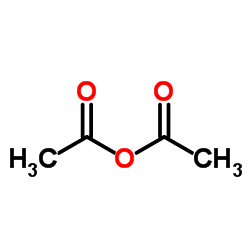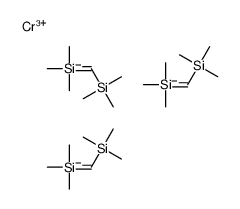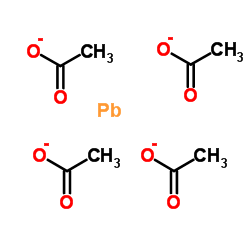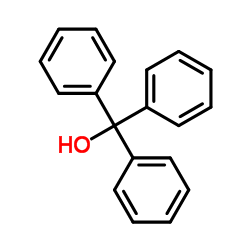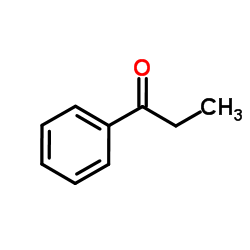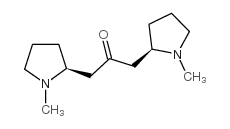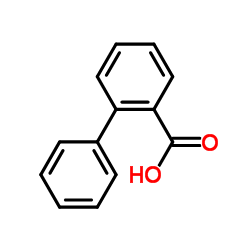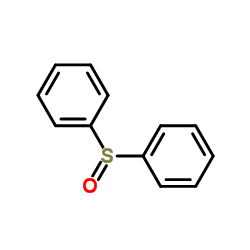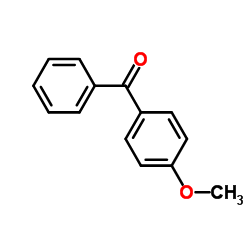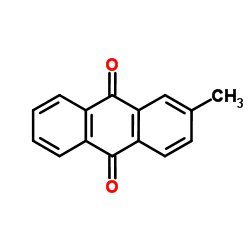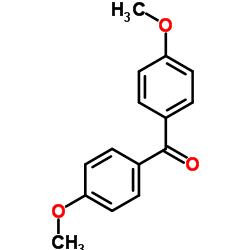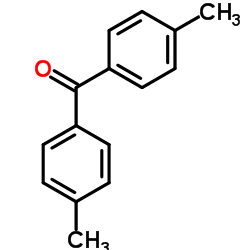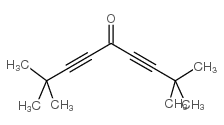1066-30-4
| Name | Chromic acetate |
|---|---|
| Synonyms |
chromium(lll) acetate
chromium(III) ethanoate chromium(III) acetate Chromic Acetate EINECS 213-909-4 Chromium triacetate chromium acetate CHROME ACETATE MFCD00036429 NA-9101 chromicacetate(iii) chromic triacetate cromium acetate acetic acid,chromium (III)-acetate ChromicAcetatePure |
| Description | Chromium(III) (acetate) (Chromic acetate) is an ionic crosslinker[1]. |
|---|---|
| Related Catalog | |
| References |
| Density | 1.705 |
|---|---|
| Boiling Point | 212 °F at 760 mmHg |
| Melting Point | >400 °C |
| Molecular Formula | C6H9CrO6 |
| Molecular Weight | 229.128 |
| Exact Mass | 228.980423 |
| PSA | 78.90000 |
| LogP | 0.04140 |
| Water Solubility | slightly soluble |
|
Section 1: Product Identification Chemical Name:Chromium (III) acetate solution, 11.2-11.8% Cr CAS Registry Number:1066-30-4 Formula:Cr(OOCCH3)3 EINECS Number:none Chemical Family:metal acetate salt Synonym:Chromic acetate (III), Chromium triacetate, Acetic acid, chromium (III) salt
Section 2: Composition and Information on Ingredients IngredientCAS NumberPercentACGIH (TWA)OSHA (PEL) Title Compound1066-30-450%0.5mg/m30.5mg/m3 water7732-18-550%no datano data Section 3: Hazards Identification Emergency Overview:Irritating to eyes and skin. May be harmful if swallowed. Possible risk of irreversible effects. Primary Routes of Exposure:Ingestion, eyes, inhalation Eye Contact:Causes slight to mild irritation of the eyes. Skin Contact:Causes slight to mild irritation of the skin. Inhalation:Material is an aqueous solution. Inhalation is not applicable. Mae harmful if swallowed. Ingestion may cause gastrointestinal distress, burning of throat, dizziness and Ingestion: weakness. Acute Health Affects:Irritating to skin, eyes and respiratory tract. May be harmful if swallowed. Chronic Health Affects:Possible risk of irreversible effects. NTP:Yes IARC:Yes OSHA:No SECTION 4: First Aid Measures Immediately flush the eyes with copious amounts of water for at least 10-15 minutes. A victim may need Eye Exposure: assistance in keeping their eye lids open. Get immediate medical attention. Wash the affected area with water. Remove contaminated clothes if necessary. Seek medical assistance if Skin Exposure: irritation persists. Remove the victim to fresh air. Closely monitor the victim for signs of respiratory problems, such as difficulty Inhalation: in breathing, coughing, wheezing, or pain. In such cases seek immediate medical assistance. Seek medical attention immediately. Keep the victim calm. Give the victim water (only if conscious). Induce Ingestion: vomiting only if directed by medical personnel. SECTION 5: Fire Fighting Measures Flash Point:none Autoignition Temperature:none Explosion Limits:none Extinguishing Medium:carbon dioxide, dry powder or foam If involved in a fire, fire fighters should be equipped with a NIOSH approved positive pressure self-contained Special Fire Fighting Procedures: breathing apparatus and full protective clothing. Hazardous Combustion andIf involved in a fire this material may emit toxic organic fumes. Decomposion Products: Unusual Fire or Explosion Hazards: No unusual fire or explosion hazards. SECTION 6: Accidental Release Measures Spill and Leak Procedures:Small spills can be absorbed in vermiculite or other suitable adsorbent. SECTION 7: Handling and Storage Handling and Storage:Store in a tightly sealed container. SECTION 8: Exposure Controls and Personal Protection Eye Protection:Always wear approved safety glasses when handling a chemical substance in the laboratory. Skin Protection:Wear protective clothing and gloves. Ventilation:If possible, handle the material in an efficient fume hood. Respirator:No respirator required. Ventilation:If possible, handle the material in an efficient fume hood. Additional Protection:No additional protection required. SECTION 9: Physical and Chemical Properties Color and Form:liq. Molecular Weight:229.13 Melting Point:no data Boiling Point:no data Vapor Pressure:no data Specific Gravity:1.28 Odor:none Solubility in Water:material is an aqueous sol. SECTION 10: Stability and Reactivity Stability:air and moisture stable liquid Hazardous Polymerization:no hazardous polymerization Conditions to Avoid:none Incompatibility:none Decomposition Products:Carbon dioxide, carbon monoxide, organic vapors, and metal oxides SECTION 11: Toxicological Information Intravenous (mouse); LDLo: 2290 mg/kg. Intravenous (rabbit); LDLo:1604 mg/kg. Intravenous (frog); LDLo: 6185 mg/kg. Implant (rat); TDLo: 1000 mg/kg/56W-I. Bacteria-Escherichia coli; Mutation in microorganisms: 16 RTECS Data:mmol/L. Bacteria-Escheichia coli; DNA repair: 93 ug/well. Bacteria-Bacillus subtilis; DNA repair: 160 mmol/L. Human Leukocyte; Cytogenetic analysis: 16 umol/L. Hamster Ovary; Cytogenetic analysis: 150 mg/L. Hamster Ovary; Mutation in mammalian somatic cells: 200 umol/L. Carcinogenic Effects:No data available Mutagenic Effects:Possible mutagen Tetratogenic Effects:No data available SECTION 12: Ecological Information Ecological Information:No information available SECTION 13: Disposal Considerations Disposal:Dispose of according to local, state and federal regulations. SECTION 14: Transportation Shipping Name (CFR):Non-hazardous Hazard Class (CFR):NA Additional Hazard Class (CFR):NA Packaging Group (CFR):NA UN ID Number (CFR):NA Shipping Name (IATA):Non-hazardous Hazard Class (IATA):NA Additional Hazard Class (IATA):NA Packaging Group (IATA):NA UN ID Number (IATA):NA SECTION 15: Regulatory Information TSCA:Listed in the TSCA inventory SARA (Title 313):Title compound see Category Code N090 for reporting. Second Ingredient:none SECTION 16 - ADDITIONAL INFORMATION N/A |
CHEMICAL IDENTIFICATION
HEALTH HAZARD DATAACUTE TOXICITY DATA
MUTATION DATA
|
| Hazard Codes | Xn |
|---|---|
| Risk Phrases | R36/37/38 |
| Safety Phrases | S26-S36/37/39 |
| RIDADR | UN 9101 |
|
~% 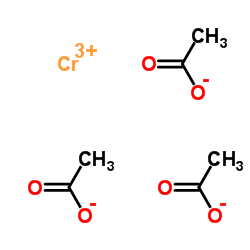
1066-30-4 |
| Literature: EP2039673 A1, ; Page/Page column 12 ; |
|
~% 
1066-30-4 |
| Literature: Journal of the American Chemical Society, vol. 33, p. 702 |
|
~% 
1066-30-4 |
| Literature: Journal of Catalysis, , vol. 105, p. 249 - 253 |
|
~% 
1066-30-4 |
| Literature: Journal fuer Praktische Chemie (Leipzig), , vol. 4, p. 211 - 226 Cr: MVol.B, 133, page 274 - 275 |
|
~% 
1066-30-4 |
| Literature: Journal of the Chemical Society, Dalton Transactions: Inorganic Chemistry (1972-1999), , p. 734 - 740 |
|
~% 
1066-30-4 |
| Literature: Monatshefte fuer Chemie, vol. 3, p. 252 |
| Precursor 6 | |
|---|---|
| DownStream 10 | |




